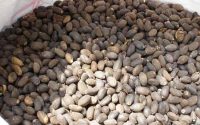Biodiesel & the Environment
Biodiesel burns much cleaner than petroleum diesel
Biodiesel is nontoxic and biodegradable. Compared to petroleum diesel fuel, which is refined from crude oil, biodiesel combustion produces fewer air pollutants such as particulates, carbon monoxide, sulfur dioxide, hydrocarbons, and air toxics. Nitrogen oxide emissions from burning a gallon of biodiesel may be slightly higher than emissions from burning a gallon of petroleum diesel.
Biodiesel use may reduce greenhouse gas emissions
The U.S. government considers biodiesel to be carbon-neutral because the plants that are the sources of the feedstocks for making biodiesel, such as soybeans and palm oil trees, absorb carbon dioxide (CO2) as they grow. The absorption of CO2 by these plants offsets the CO2 that forms while making and burning biodiesel. Most of the biodiesel produced in the United States is made from soybean oil. Some biodiesel is also produced from used vegetable oils or animal fats, including recycled restaurant oil and grease.
In some parts of the world, large areas of natural vegetation and forests have been cleared and burned to grow soybeans and palm oil trees to make biodiesel. The negative environmental effects of this land clearing and burning may be greater than the potential benefits of using biodiesel produced from soybeans and palm oil trees.



